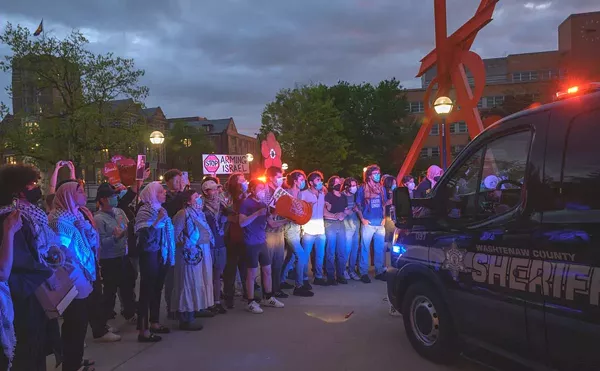
Audio By Carbonatix
[
{
"name": "GPT - Leaderboard - Inline - Content",
"component": "35519556",
"insertPoint": "5th",
"startingPoint": "3",
"requiredCountToDisplay": "3",
"maxInsertions": 100,
"adList": [
{
"adPreset": "LeaderboardInline"
}
]
}
]
A news piece in the Michigan Chronicle today caught our attention. It's by former MT columnist Keith Owens, and it's all about how the number of black-owned buildings has fallen as downtown's prospects have risen. It bears the provocative title "Who owns Detroit’s downtown? Not us."
The piece reports that there were 16 black-owned buildings in downtown Detroit in 2002. Thirteen years later, those in the know say that fewer than a quarter of them still are black-owned. That this shift occurred during the "rebirth" of downtown is cause for concern. The piece quotes black building owner Sharon Madison as saying: “It’s not good. Particularly in a city where we make up the percentage of the population that we do, and I think it’s a reflection of a lot of other things."
The article, and the remarks of those interviewed in it, struck a chord with us, as earlier today we blogged about an article on Quartz that seems to dovetail with the correlation Owens covers. That piece had talked about how gentrification played out in Brooklyn along class contours. It read:
Williamsburg is getting a Trader Joe’s while interior Brooklyn is rapidly becoming the Sahara of all food deserts. Affluent white people buy expensive stuff, poor minorities do not—or so market research likely tells the folks in location-development departments at Whole Foods, Urban Outfitters, and company.
Big, job-bringing corporations have no financial impetus to invest in our nation’s poorest neighborhoods—and so our nation’s poorest neighborhoods stay poor. That is, until some graphic designer or eco-friendly boutique owner in an abutting, rent-resurgent neighborhood realizes how comparably cheap average square footage is.





